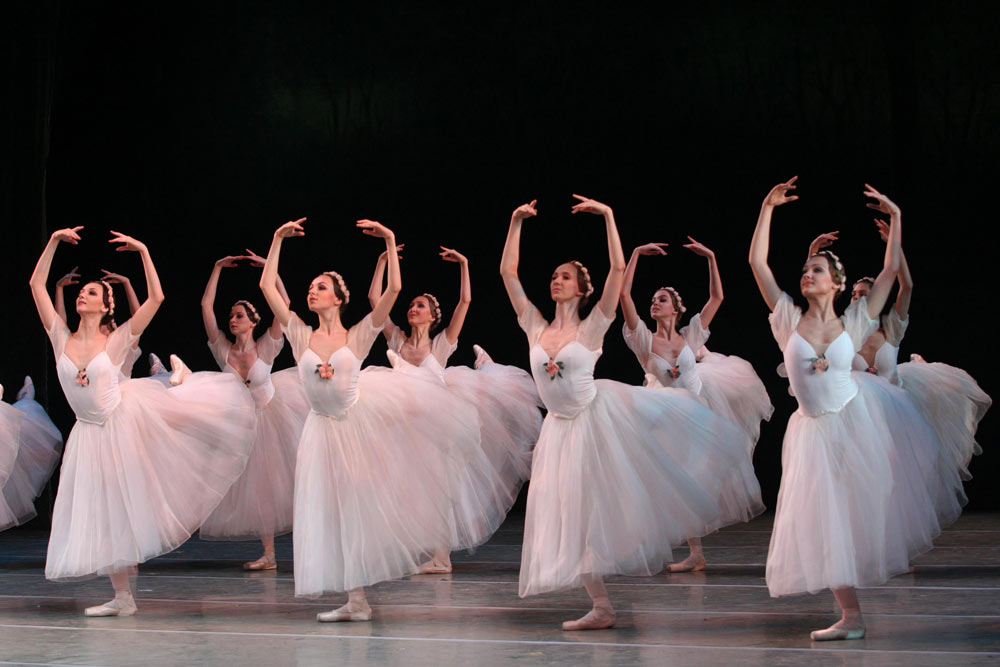
Chopiniana, The Firebird and Schéhérazade
Washington, Kennedy Center Opera House
January 17-22, 2012
www.mariinsky.ru
For their traditional annual engagement at the Kennedy Center Opera House, the venerable Mariinsky Ballet brought to their Washington audience a mixed-bill program titled Les Saisons Russes (The Russian Seasons): a collection of three ballets – Chopiniana, The Firebird and Schéhérazade – choreographed by the great Russian ballet master Michel Fokine from 1908 to 1910.
Les Saisons Russes pays tribute to Fokine, a Mariinsky alumnus whose forward-looking, innovative approach to choreography helped revitalize the traditional dogmas of 19th century ballet. It’s also homage to Russian impresario Sergei Diaghilev and his company Les Ballets Russes (its roster included such legends as Anna Pavlova, Tamara Karsavina, and Vaslav Nijinsky), which pioneered these ballets in the early 20th century in the West.
The program opened with the poetic Chopiniana, a Fokine masterpiece and a crown jewel of his choreographic legacy. This ballet has remained in the Mariinsky’s repertory for more than 100 years.
Fokine called his Chopiniana a “reverie romantique.” Created in 1908 for the Mariinsky Theater, this lyrical and deeply romantic ballet – a suite of solos and ensemble numbers set to orchestrations of the piano music of Frederic Chopin – had always a special place in the choreographer’s heart. It was his most popular and widely performed work, and the first purely abstract classical ballet. Opposing any kind of showiness in dance, Fokine didn’t include in Chopiniana any impressive stunts such as turns in the air, virtuosic leaps or multiple pirouettes, which were must-haves for a ballet performance at that time. Instead, the ballet’s movements possessed both simplicity and ultimate sophistication, with the ballerinas in ankle-length white flowing dresses dancing in a sublime, almost ethereal manner.
The company diligently preserved the choreographer’s vision of this work, and as such, Chopiniana offers a showcase of a flawlessly articulated romantic ballet style.
On opening night, the Mariinsky dancers brought to the fore not only their exquisite technique and eloquent style; they also performed with naturalness and poignancy, aptly conveying the idyllic nature and melancholic mood of the ballet. The cast seemed to possess a unique sense of expression that helped create a stunning visualization of the poetic experience that Fokine so magnificently captured in movement.
The ballet’s opening scene revealed a charming tableau of the female corps de ballet and the soloists arranged in a semi-circle. To the melancholic sounds of Nocturne, the ensemble mirrored the music with sculptured poses and fluid steps. Their languid dancing produced an impression of one long, continuous flow of movement as the ballerinas moved about the stage en pointes as if floating on air, shaping one beautiful choreographic formation after another. Their imaginative permutations offered a fascinating example of the great creative symmetry of ballet, and the resulting effect was transporting and mesmerizing all at once.
The stately Igor Kolb delivered an elegant portrayal of a young poet infatuated with beauty of the eerie sylphs. (Even though Chopiniana has no story, it can be perceived as the dream of a youth, who finds himself in an enchanted forest inhabited by these ethereal winged spirits.)
Yana Selina was delicate and spirited in the Eleventh Waltz, breezing across the stage in a series of graceful jumps and arabesques, her hands fluid and beautifully articulated. Xenia Ostreykovskaya brought a touch of mystery to her part in Prelude. The Prelude is danced in a very slow tempo; and the choreography requires an exceptional sense of balance and timing, which Ostreykovskaya demonstrated splendidly, illuminating every step with utmost serenity and charm. Enveloped by the corps de ballet, Maria Shirinkina and Kolb discovered and revealed their romantic longing to the sounds of the Seventh Waltz. The expressiveness and sincerity the couple poured into their dance made it the most enchanting moment of the performance.
It’s hard to believe The Firebird made its way to the Mariinsky repertory only in 1994, nearly a century after it was commissioned by Diaghilev for Les Ballets Russes’ second European season and premiered by the Russian troupe at Theatre de l’Opera in Paris.
This ballet is significant to Russian arts on many levels. The Firebird was envisioned as the first original national Russian ballet. Fokine’s libretto was based on a combination of Russian fairytales that featured traditional folk personages such as Kashchei the Immortal, Ivan Tsarevich and the Tsarevna of Unearthly Beauty. The score for the new ballet was commissioned from the then-28-year-old and virtually unknown composer Igor Stravinsky, whose peculiar music, which brimmed with unusual sounds and textures, found little success with the public and the musicians of the Imperial Theater at that time.
The collaboration between Fokine and Stravinsky during the making of The Firebird represented “the unity of creative choreography and creative music.” “The music was afire, burning brightly and sending off sparks. That was exactly what I needed for the fiery image of the ballet,” wrote Fokine about the new score. The ballet was a smashing success and, for Stravinsky, provided a major break with the audiences and the critics. Little did Diaghilev know that, by entrusting Stravinsky with The Firebird commission, he christened the greatest ballet composer of the 20th century.

© Natasha Razina. (Click image for larger version)
It is said that in its original incarnation, with fantastic sets and costumes by Alexander Golovin and Leon Bakst, The Firebird was a marvel to behold. The ballet became a manifestation of Russian arts, raising choreographic aesthetics and elevating the art of ballet to a totally new height.
The version presented by the Mariinsky at the Kennedy Center was a modern staging of The Firebird, a 1994 reconstruction by Isabelle Fokine (the choreographer’s granddaughter) and Andris Liepa (a former Russian star dancer with the Bolshoi and Mariinsky Theater).
The redesigned decorations and costumes created by Anna and Anatoly Nezhny were handsome and effective, faithfully rendering a magical and spooky world of Russian fairytales. The centerpiece of the performance was Ekaterina Kondaurova in the title role. Dressed in a bright red tutu, she created one fascinating moment after another. With her beguiling and animated stage presence, Kondaurova was her own spectacular show, dancing with a trademark precision, intensity, and ardor. Watching her darting across the stage was a blissful thrill. She captured the essence of her role – a bold and free spirit, inspiring and energizing the entire cast.
Alexander Romanchikov gave a smart but somewhat understated rendition of the Ivan-Tsarevich, the role which was originated by Michel Fokine himself. Ekaterina Mikhailovtseva was appropriately ravishing as The Princess of Great Beauty; and Soslan Kulaev, as Kashchei the Immortal, made every effort to look nasty and malevolent despite his Halloween-like costume. But what really made my heart beat faster was the galvanizing performance of the ensemble portraying a gang of assorted monsters, witches, Kashchei’s servants and guards, as the Firebird cast her magic spell and made them dance against their will. The scene when they all moved in one unremitting vicious circle was one of the most exhilarating moments of the ballet. Here, Fokine’s genius in handling mass scenes was in a vivid focus.
The Opera House orchestra, under the baton of Alexey Repnikov performed with lush sound and panache, giving full measure to the Stravinsky’s score.
The exotic and lavishly decorated Schéhérazade concluded this remarkable program of Russian short ballets. Schéhérazade was inspired by Nikolai Rimsky-Korsakov’s symphonic suite of the same title, composed in 1888. Fascinated by the dazzling orchestration of Rimsky-Korsakov’s music, Diaghilev asked Fokine for a new ballet with a libretto based on the first tale from the “One Thousand and One Nights.”
As presented by the Mariinsky Ballet, Schéhérazade offered a sumptuous visual feast, brimming with an extraordinary theatricality. When the curtain went up, revealing the décor of Sultan Shahriyar’s palace, the audience audibly gasped in admiration. (The dancers’ costumes as well as the set designs were masterfully recreated by Anna and Anatoly Nezhny.)
The ballet unfolded in an unhurried, meditative manner and held the audience’s attention by its utterly absorbing storytelling. Here, Fokine introduced a new innovative approach to the pantomime choreography, one in which each gesture was clearly rendered through the movements and positions of the body. From the ballet’s opening scene, when the hesitant and suspicious Shahriyar (the incomparable Vladimir Ponomarev) bid farewell to his favorite wife Zobeide (Uliana Lopatkina), every moment was full of suspense, every gesture building up the drama.
With her silkily seamless, feline movements and gorgeous features, Lopatkina as Zobeide was simply stunning: You couldn’t take your eyes off her supple, statuesque body adorned in a richly bejeweled costume. She portrayed her heroine as a supremely conflicted person, driven by passion and impulse. The allure and tenderness she brought to the role made Zobeide’s tragic death at the end all the more poignant. Daniil Korsuntsev as the Golden Slave was fittingly amorous, covering the stage with enormous jumps, his movements rapturous and intense.
The action onstage got rollicking as the Palace inhabitants, including Sultan’s wives, slaves, and odalisques, whirled in the frenzy of the wild orgy – an awe-inspiring scene, which once again demonstrated Fokine’s mastery of conjuring effective ensembles.
Balancing spectacular dancing with stirring drama, the Mariinsky dancers delivered a riveting, unforgettable performance. I left the Opera House with wonderful memories of this evening, humming the lyrical leitmotif from Schéhérazade which was so tenderly played during the ballet by an excellent solo violinist.







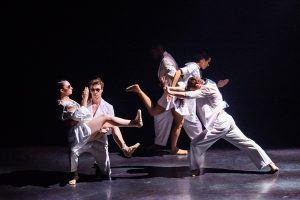

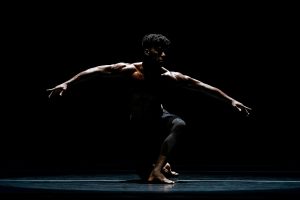
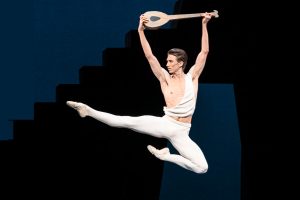
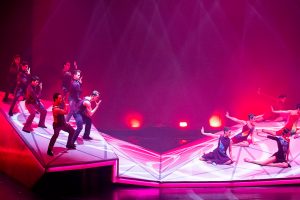




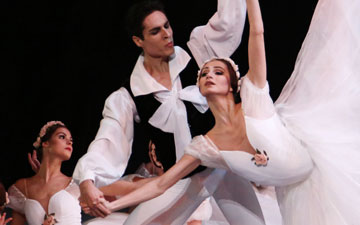
You must be logged in to post a comment.